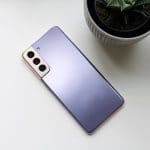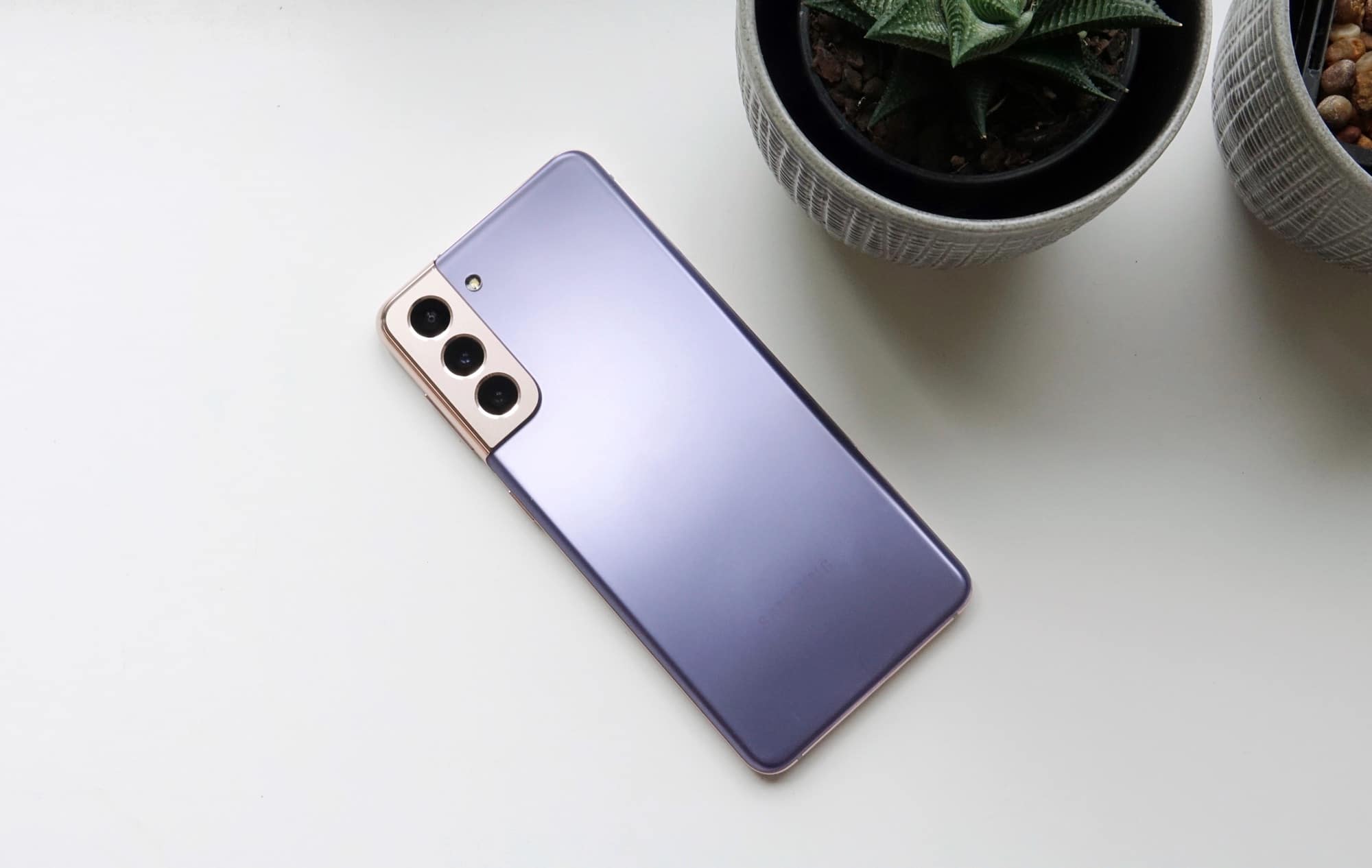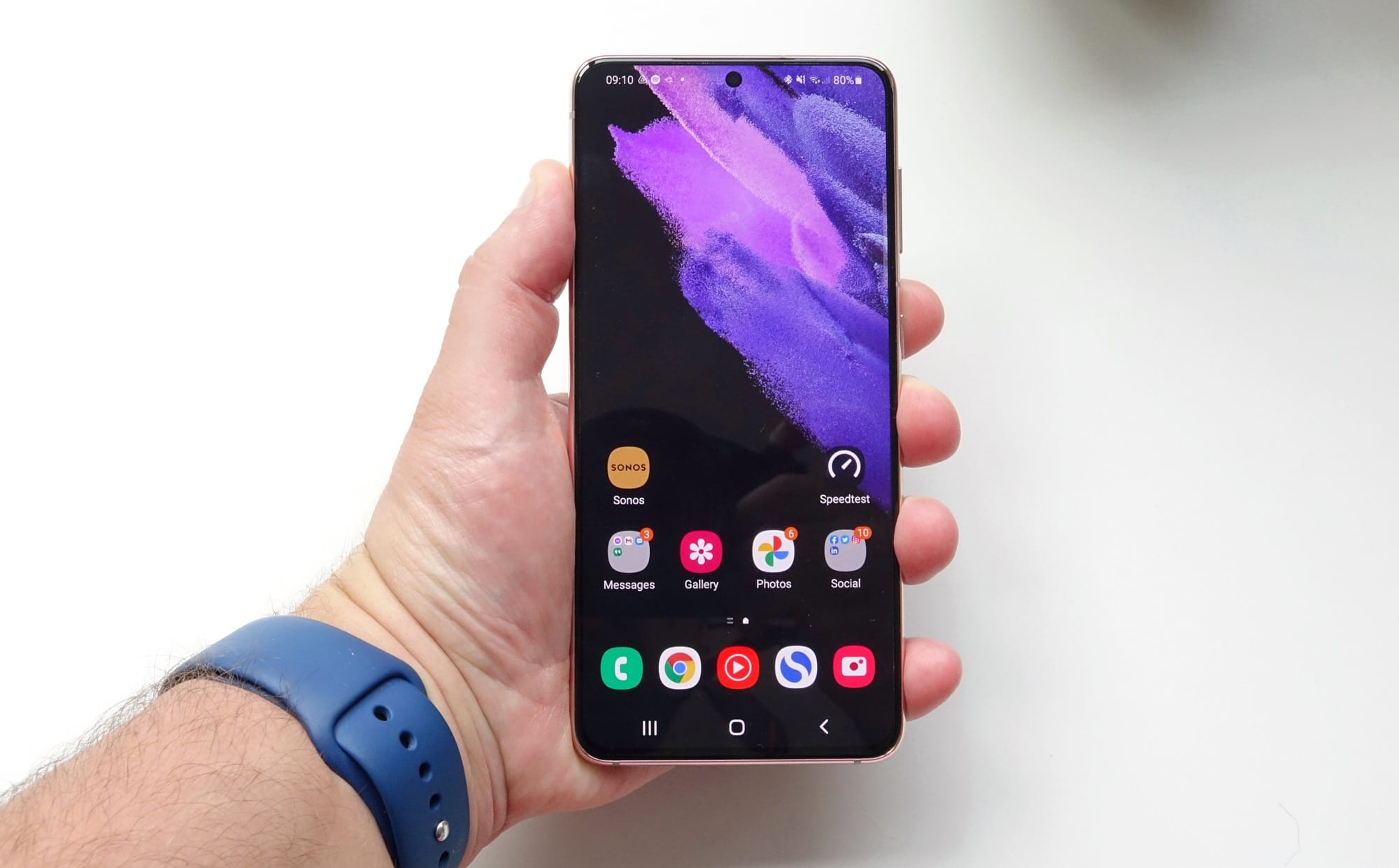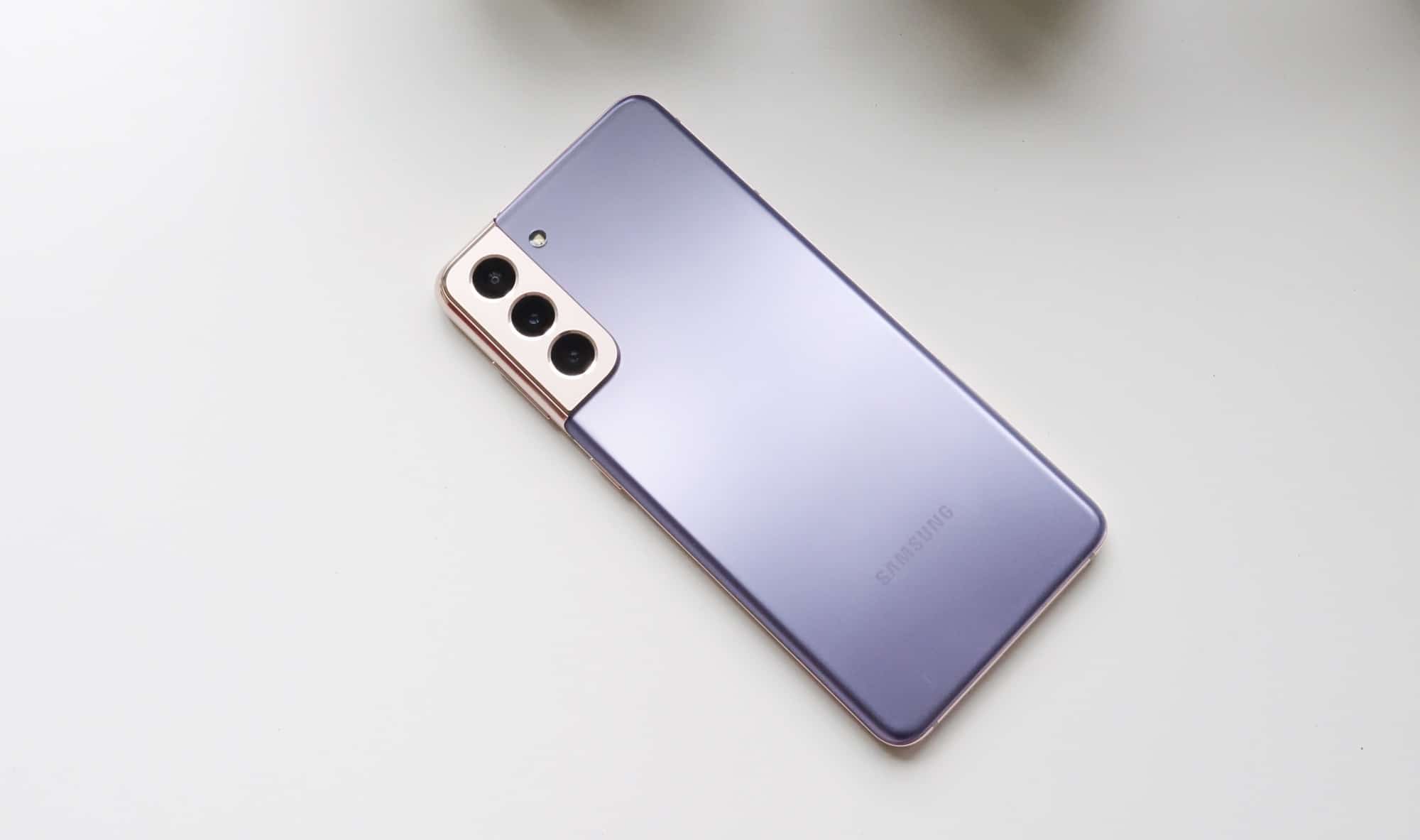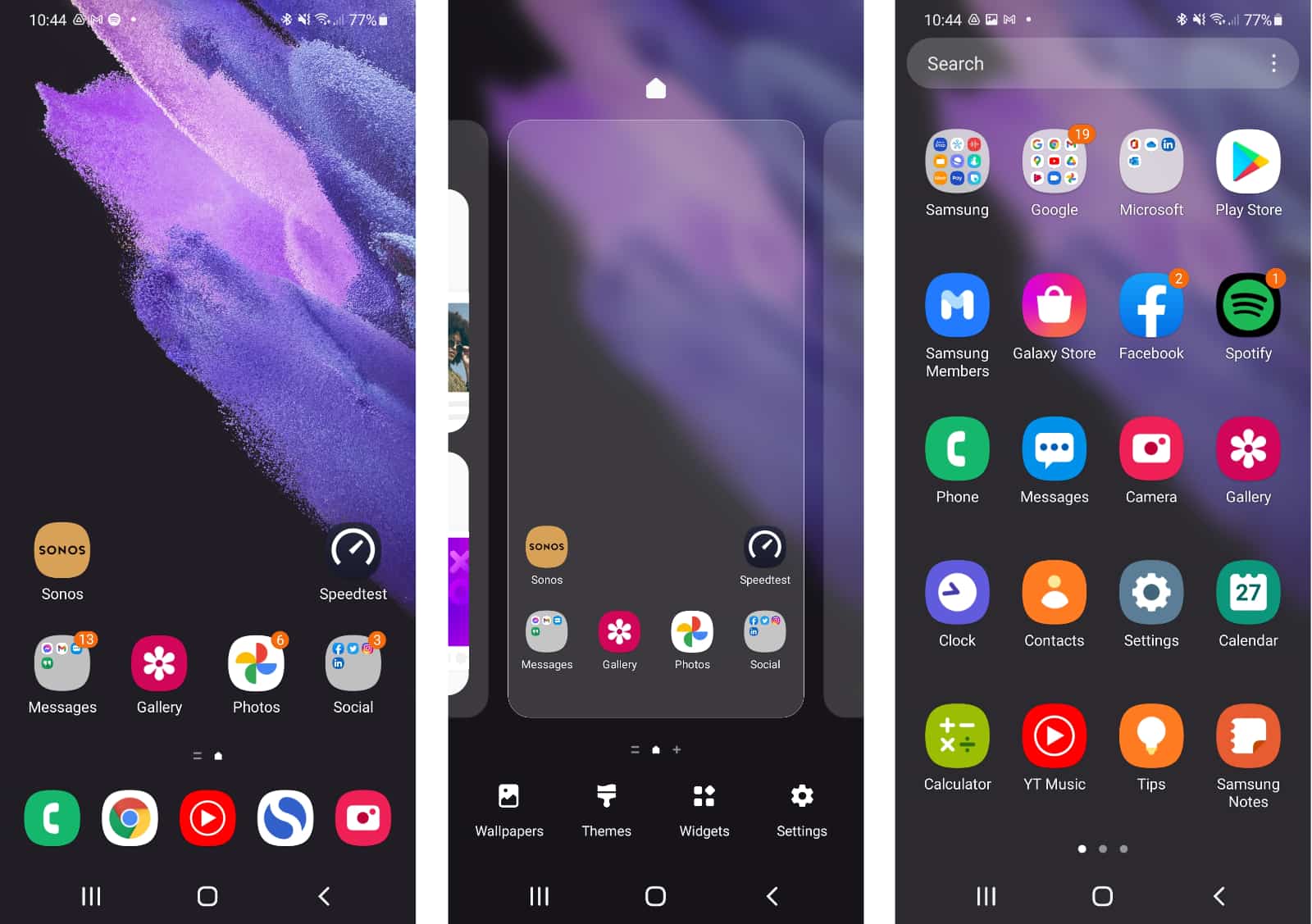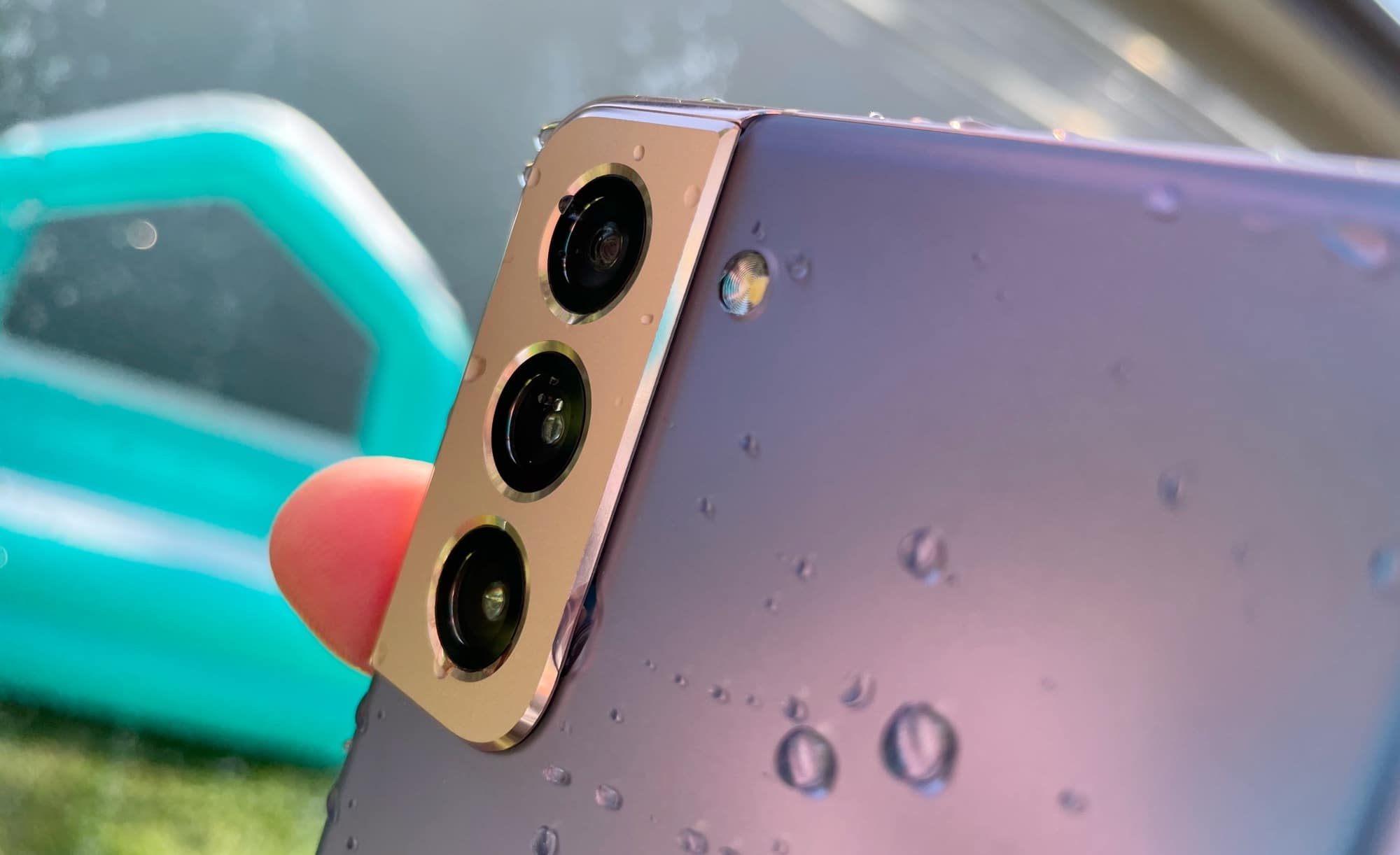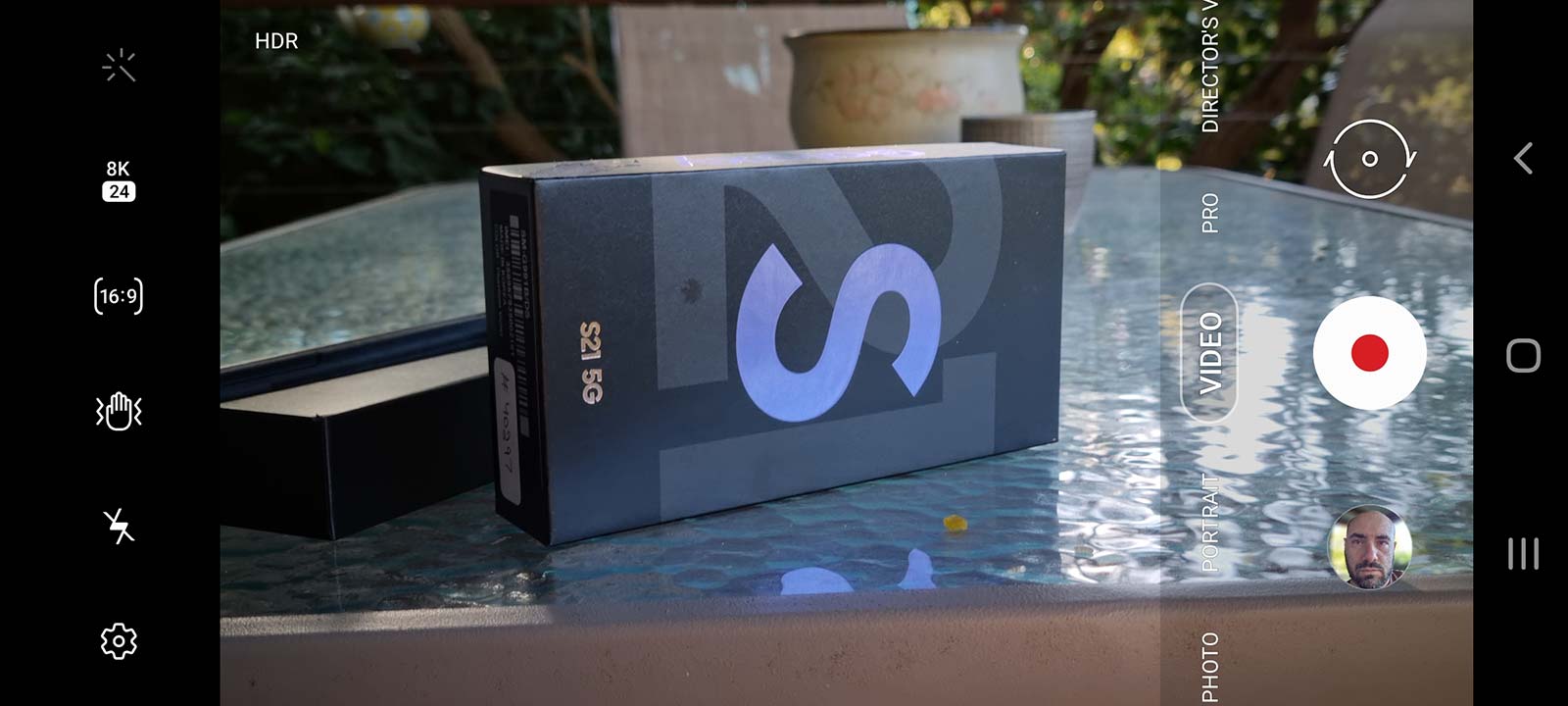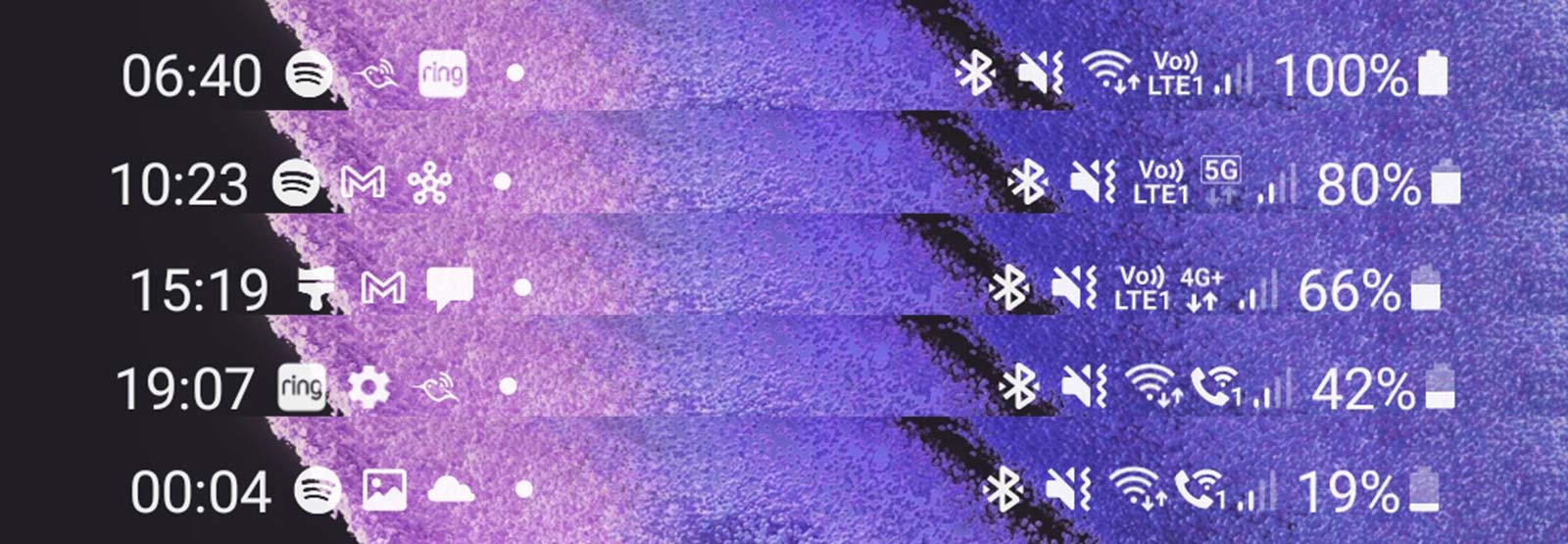Quick review
The good
The not-so-good
A nice balanced design, a capable camera system, 5G, and a lovely screen. It seems like the Samsung Galaxy S21 has it all, so why isn’t it the winner we want it to be?
Design
A new year and a new phone, and yes, there’s even a new design with it. Samsung’s Galaxy S-range may technically be in its 12th range, but we’re calling it the “S21” because of the year. And that new name also comes with a new design, which in the standard S21 is made from plastic and metal, while offering a slightly slicker take on the S20 models such as the Galaxy S20+ and Galaxy S20 Ultra from last year.
You’ll find a 6.2 inch AMOLED screen with a selfie camera punched into a hole on the front, and it takes up most of the front with very minimal bezels.
On the back, there’s the look of frosted glass, even if it’s plastic on the standard S21, while the camera sits inside of a metal traffic light configuration, encased in its own block and connecting to the metal rim on the phone.
It’s very pleasing to look at and feels nice, too, with Samsung’s new design language being very easy on the eyes, and even the pockets.
Features
Inside, the Australian Galaxy S21 model will see the new Samsung Exynos 2100 processor, paired with 8GB RAM and either 128GB or 256GB storage. For the first time in a Samsung phone in ages, there’s no microSD slot, something we don’t think is much of a surprise, but is sad to see go, missing alongside the removal of bundled in headphones and a power adaptor, too, following Apple’s footsteps and making for one of the leanest packages from Samsung yet. Generosity is in short supply by manufacturers, it seems.
Camera-wise, you’ll find a few of these here, with a 10 megapixel selfie camera up front, while the back offers three cameras, made up of an ultra-wide 12 megapixel set to F2.2, a standard wide 12 megapixel set to F1.8, and a 64 megapixel 3x telephoto set to F2.0, the latter of which is where an 8K video capability comes from.
Connections sees the S21 support 4G, 5G, Bluetooth 5, 802.11ax WiFi 6, Near-Field Communication (NFC, used for pairing and Google Pay), Magnetic Stripe Technology (MST, used for Samsung Pay), and a wired Type C USB connection at the bottom.
The Galaxy S21 is rated for IP68 water resistance and includes wireless charging, an in-screen fingerprint scanner, facial security, and encases a non-removable battery of 4000mAh.
In-use
Get through the specs and you can turn the phone on, and honestly, if you’ve seen one Samsung, you probably know how to use the entire lot. It is not remotely difficult, and yay, there’s still no Bixby button. Glad we’ve moved on from that idea, as Samsung’s virtual assistant takes a virtual backseat.
You’ll find a power button and volume controller on the right edge, with the frame being curved out to fit nicely in the hand, though it won’t sit comfortably on a table standing up the way the iPhone 12 range does. This is more like the iPhone 11 Pro Max with its smooth corners, though it does come with a screen protector pre-installed, which is a nice touch.
Controlling the phone is easy, too, with the combination of in-screen fingerprint sensor feeling more reliable than it ever has been, helped because the facial security is also quick enough, too. Android 11 is also here on the S21, ready out of the box, and it’s a slick experience, thanks in part to Samsung’s One UI, which doesn’t feel too far removed from what Google envisions.
Performance
Armed with Samsung’s latest chip in the Australian model, the Exynos 2100, plus a decent amount of memory and storage, the Samsung S21 is fairly reliable when it comes to using the phone, with plenty of performance and only a smidgen of lag.
We’d say you can thank the 8GB RAM for how speedy the phone handles apps aplenty, though the odd slowdown definitely popped up when we were controlling the camera, which wasn’t always as instantaneous as we would have liked.
Still, it’s capable enough for most people, so we doubt you’ll find all that many complaints.
Support for 5G is also part of the package, and this year, there’s no 4G model, so you get 5G standard. How nice is that?
Testing 5G, we definitely found the connection was there, but Telstra’s 5G network performance isn’t as amazing as to what the company talks about with regards to its 5G reach, at least in our experience. If you have it, great, but if not, your 5G connection might trickle in, such as it did with us in Sydney’s south.
That’s no fault for the Galaxy S21, though, because it’s doing what it can with the network it has, support both 4G and 5G the best it can. Essentially, provided you have reach, you should have a connection. It’s as easy as that.
Camera
That same philosophy might just apply to the three-prong camera system on the Galaxy S21, because for the first time in ages, Samsung is within spitting distance of something that’s “as easy as that”.
With a camera setup supporting standard wide, ultra-wide, and a little close, it’s enough of a camera design that we think will impress most people, basically offering what high-end phones get, but in slightly less expensive package.
The difference is notable between Samsung’s obvious competition, too: on the standard iPhone 12, you get wide and ultra-wide, while the Samsung S21 offers wide, ultra-wide, and close. It’s that sort of difference which could just win people over to what Samsung offers, provided the quality is there.
And you know what? The quality isn’t bad at all, with Samsung making some changes to how the sensor works, improving the results, while also fixing the interface and moving beyond its rather silly interpretation of portrait mode called “Live Focus”, which thankfully has been moved out of the Galaxy range.
This year, the S21’s camera mode supports “Portrait Mode”, possibly because “Live Focus” never made much sense, and it was always just a way for Samsung to say “Portrait Mode” without actually acknowledging the fact. And it works quite nicely, too.
Using a combination of software smarts and the camera, Samsung’s Portrait Mode not only offers a focus point that can be changed and a way to fiddle with the background texture, but some sharp and delightful imagery from its camera, doing a relatively solid job with portraits. You can definitely get images out of the S21’s portrait mode that are more like a proper camera, and aren’t far from the competition.
Through extended testing, we found the S21’s Portrait Mode seemed to handle better in the ultra-wide mode, but you get two options — close and wide — so at least you have that choice, something the iPhone 12 Pro offers, but not the standard iPhone 12.
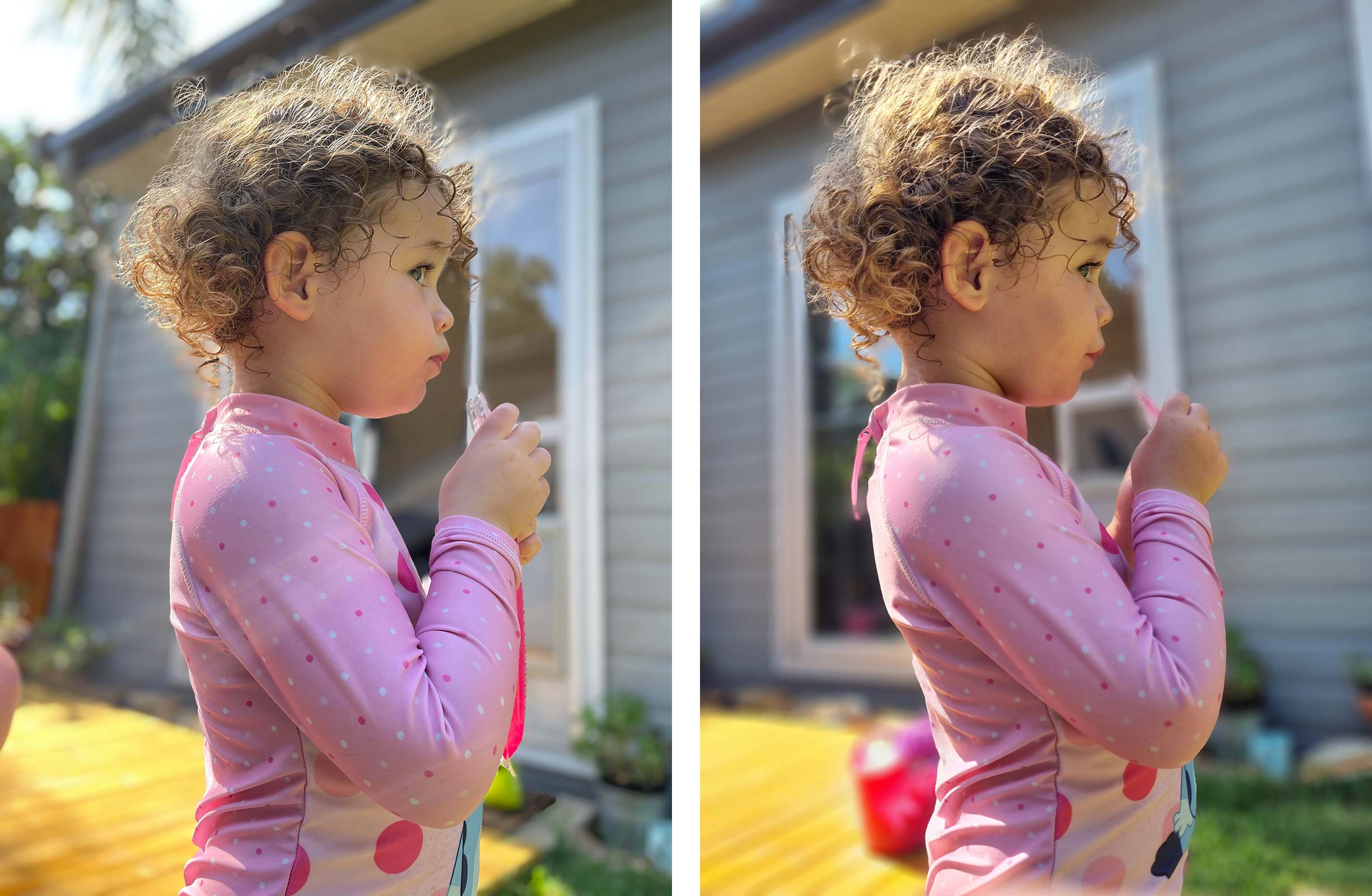
In regular shots, the S21 shines, as well. Taking pictures in daylight reveals bright colours, crisp details, and sharp results, and it’s not bad when the light goes out, either.
At night, the low-light capability of the S21 is good, too, but not the best. Owners of the S21 won’t have a whole lot to complain about, for sure, but the moment they go comparing their images to what Apple’s iPhone 12 sensors can do, that may change. The fact of the matter is that Apple does a better job with low-light, and indeed with portrait shots on the “Pro” range of phones, which use a light and distant measurement technology — LiDAR — something Samsung’s Galaxy S21 totally misses out on.
While you don’t get LiDAR, Samsung has left its “Single Take” option, which allows you to capture a short run of images and video, before the system processes it with special filters. While last year’s introduction of Single Take in the Galaxy S20 resulted in the system feeling largely underwhelming and refusing to work half the time, the kinks appear to be mostly worked out in the S21, which means it might work a little better.
One kink, however, might come from Samsung’s AI, which kind of gets in the way. In our tests where we left Samsung’s Scene Optimiser on, we found images would blow out the colour significantly, resulting in scenes that were bright and vivid (yay!), yet also looked very little of what the scene actually looked like (boo).
The result of something as simple as a capsicum (Americans read as “pepper”) meant the orange capsicum growing in our garden constantly came out as bright red until we switched the Scene Optimiser off. That’s what we’d recommend overall, mind you, because Samsung’s AI-focused image optimisation system does the S21 no service.
At least Samsung has tried to offer a little more than you might get on some other phones, thanks to the extras in video mode, which go beyond the basic “capture video” you might expect to find.
Take Ultra HD: it is delightful to see 8K video supported on the S21, particularly given 8K content is ridiculously hard to find. However, it’s worth noting that the Galaxy S21 only captures 8K video from the telephoto camera’s 64 megapixel sensor, because it’s the only camera big enough to do so (8K video sits at just under 33 megapixels, so you need a sensor bigger than 12 megapixels to use it). With that in mind, you can’t zoom to use 8K video, be it out or in, and you’re kind of, well, stuck.
Samsung’s “Director’s View” mode might be the more interesting of the video modes we’ve seen, as it offers up a view of all the cameras at once, and lets you capture from them all quickly. It has bugs, such as not supporting touch focus and messing up what is in focus, plus causing the phone to overheat (more on that in moments), but it’s a neat idea, even if it feels like it should be bug tested more clearly.
Overall, Samsung’s S21 offers a decent camera system with notable improvements, though also with its own kinks and bugs.
Battery
However the kinks and bugs in the camera seem like nothing compared to the S21 battery, which goes from being “meh” to a downright disaster.
Despite the 4000mAh battery being fairly sizeable and the screen actually being a lower resolution than previous Samsung S-series phones — Full HD+’s 2400×1080 — Samsung struggles to hit a full day of battery life.
In our tests, the phone was running on fumes after around 18 hours when we went to bed, and that was after an on-screen time of less than three hours.
Granted, we live in a different world now, and are probably close to a phone charger at all times, but that still doesn’t change the fact that it’s a mediocre battery performance from the Australian S21. Certainly not one belonging in 2021, with the workday battery life more like something out of 2019, and hardly two years later.
If we used the phone a little more, and specifically focused on the camera, the S21 struggled to hit 12 hours. The more you use that camera and screen, the worse the battery life gets.
Value
That hits the value hard, because while the Galaxy S21 is a high-priced phone, and the spec list certainly helps it get there, it still feels a little exy for the overall delivery.
Yes, phones in 2021 are expensive, thanks in part to phones in 2020 also being quite expensive.
You do get a few features, such as several cameras, 8K support, and a screen supporting varied refresh rates, but it also starts at $1249 in Australia. That’s Samsung aiming straight at the iPhone 12 and iPhone 12 Mini, with the former more and the latter less, even if the feature sets is similar.
Given the comparison, the value isn’t far off the competition — which is good — even if the result doesn’t feel as balanced — which less positive.
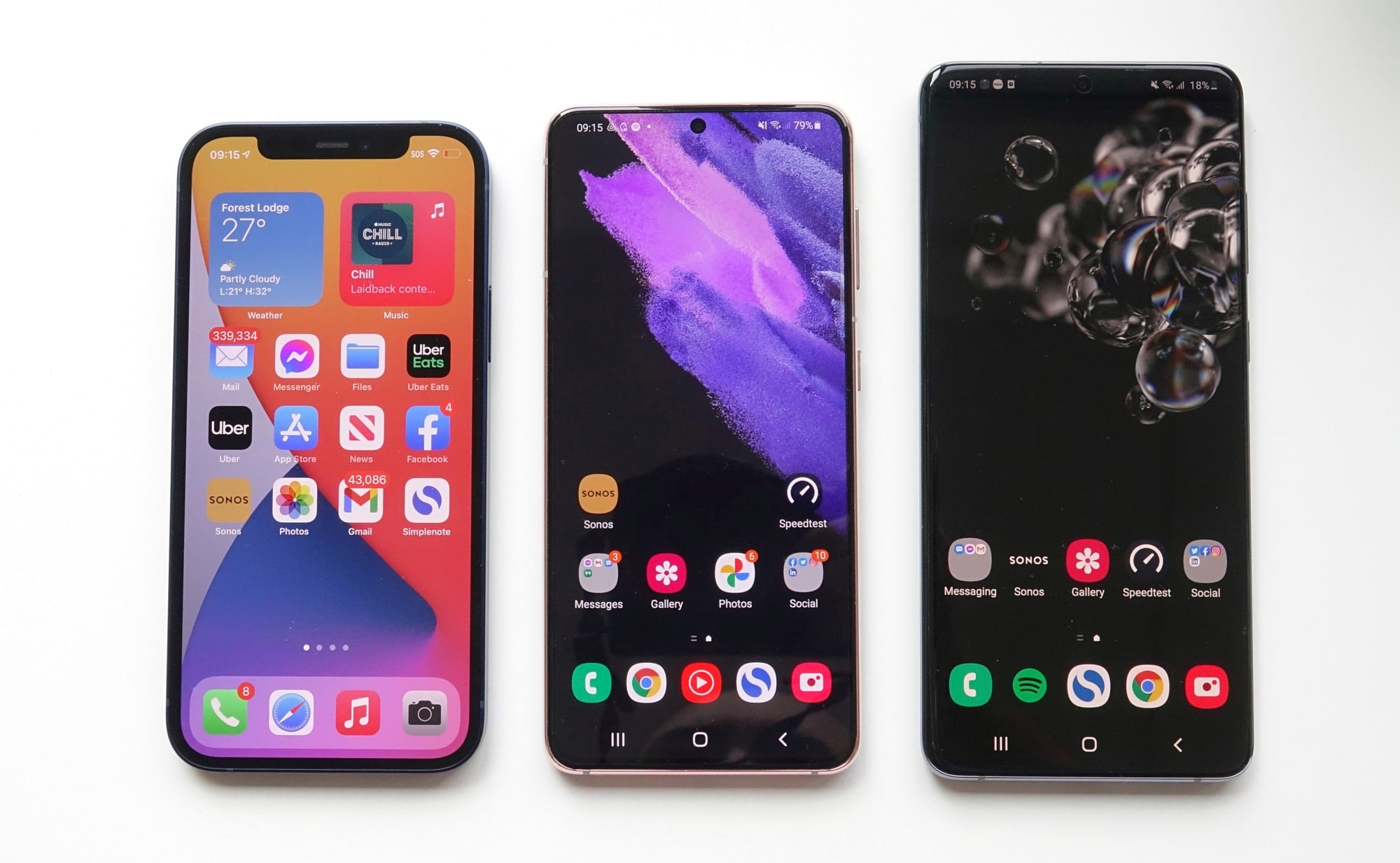
What needs work?
And it’s not just the value we’re a little at odds with, nor is it the battery, which is clearly not a winner as far as the phone goes. It’s hard to rave or be remotely impressed by a 6.2 inch phone with a 4000mAh battery that struggles to go beyond a day. In fact, dependent on your camera use, we found that you could hit under a day without any problems, something that clearly isn’t a talking point Samsung will want highlighted, especially if you might have to start turning off features to get more, such as that 120Hz screen.
But the problems with the S21’s lack of performance go beyond the issue with the battery, because it has heat problems, too.
Throughout our Galaxy S21 review and testing period, we found the Exynos 2100 inside could really heat up dependent on what you were doing, causing a little bit of discomfort when holding the phone.
One of the re-creatable tests we found was to jump into the camera’s “Director’s View”, which thanks to a new feature in the Exynos 2100 chip allows you to view all three cameras at once plus the front-facing selfie camera, and then jump between them. No doubt, it’s a process that would exhaust most chips, but Samsung’s latest and greatest should be able to handle it. After all, Samsung put this feature here, so it’s not like we’re testing something new isn’t foreseen.
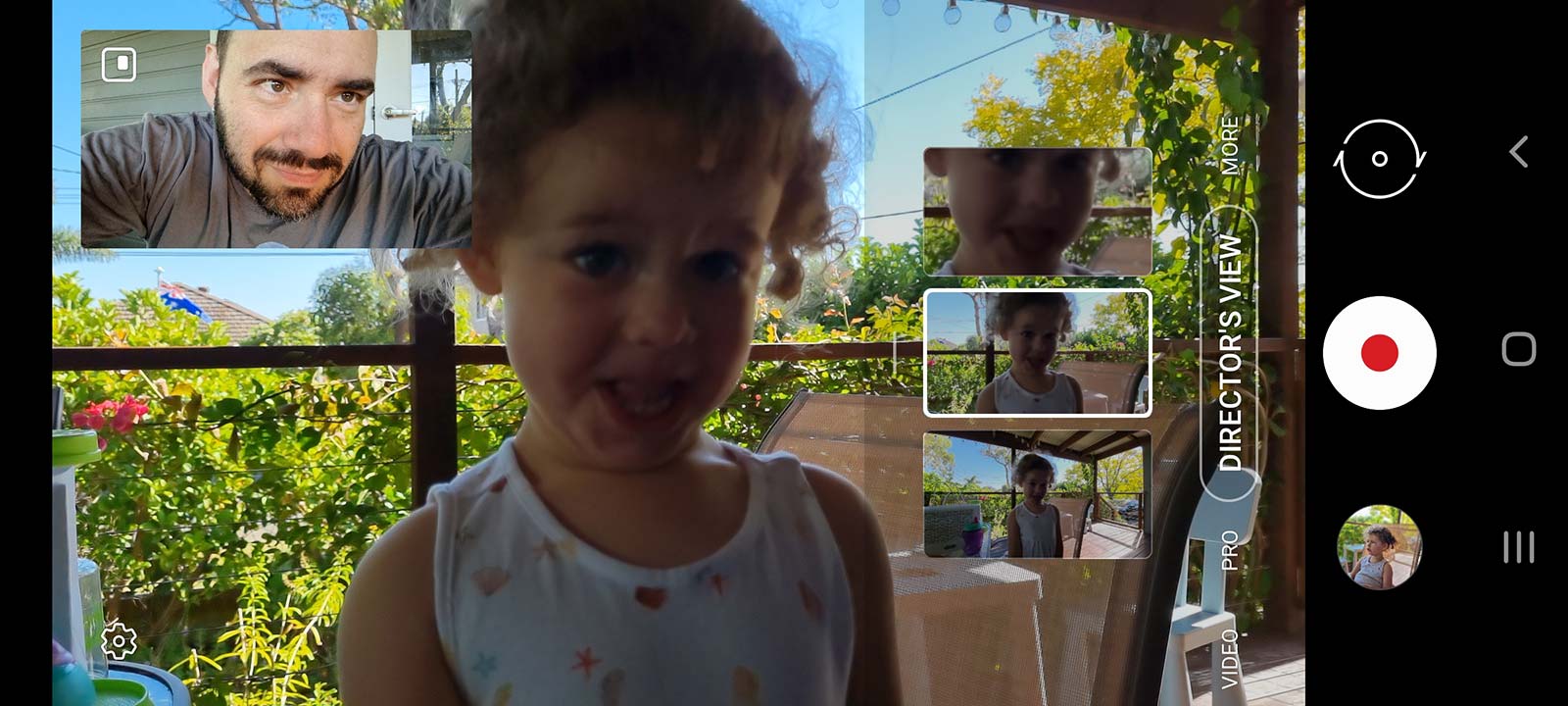
And yet every time we did, about 20 seconds after jumping between cameras and capturing a scene, the metal block where the cameras were held would heat up almost to a rather uncomfortable level.
To say it was warm would be an understatement, and the heat could push to the metal sides, making for a rather toasty phone.
That’s not a brilliant outcome for a new chip, and makes us wonder about the chip and its performance, and what the Exynos is doing to other parts of the phone. Plus there’s the knowledge that the American model may perform better, given it has a totally different chip with similar features, the Qualcomm Snapdragon 888.
Will the US Snapdragon S21 fare better than the Exynos variant? Possibly, and if so, that may not be a fantastic outcome for Australian customers, or really anyone outside of the States buying an S21.
Final thoughts (TLDR)
The first of 2021’s phones, the Samsung Galaxy S21 is a nice phone with some decent features, but it’s not one that we’ve exactly fallen in love with.
Samsung owners will be happy with what’s on offer, delivering a Galaxy that is clearly strong, and feels great, too. But it’s not the best phone so far, and feels outpaced by some of last year’s mobiles.
It’s a pretty easy statement to call the S21 “the best Galaxy yet”, and we suspect more than a handful reviewers will, but for us, it feels like there’s room for improvement. It’s even possible that the model Americans are seeing is that model, because Snapdragon S21 owners mightn’t see the battery and heat issues we’re seeing.
Until those issues are fixed, it’s hard to see Samsung’s S21 as anything more than a nice return, albeit one that still needs some work. Worth a look, but at the beginning of the year, it feels like we’ll see something beat it shortly without fail.
